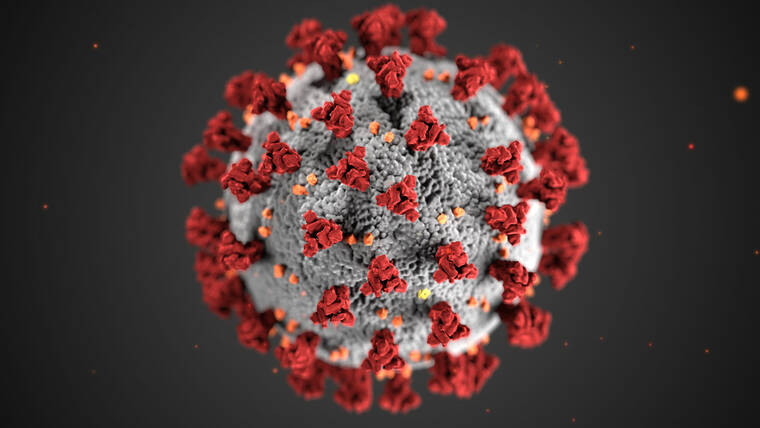LIHU‘E — In one of Kaua‘i’s worst weeks for COVID mortality, the island saw three deaths as a result of the virus.
A male resident in his 80s who was hospitalized, a female resident in her 90s who was not hospitalized, and a male resident in his 60s who was not hospitalized all succumbed to the disease this week.
“The recent deaths are a sad reminder that COVID can be serious and even deadly for some,” said Mayor Derek Kawakami in his weekly COVID-19 update. “If you or those around you are at increased risk, please take precautions and seek medical care if you are ill.”
Though the case counts have continued a slow, steady decline, going from an average of 23 a day last week to 17 a day this week, mortality has been high this summer compared to previous months.
The state Department of Health dashboard shows 11 deaths from the virus occurred on island since the beginning of June. During the nearly two and a half years of the pandemic, there have been less than 40 total COVID deaths on Kaua‘i.
“We know that deaths are a lagging indicator, so I think the higher mortality that we’re seeing right now are a reflection of the high case counts we experienced over the last two months,” said Lauren Guest, the deputy district health officer at the Kaua‘i District Health Office, in an interview with The Garden Island. “A lot COVID deaths, they spend a long time in the hospital, and their infection is quite old.”
Guest also attributed the high mortality rate to changing behaviors as restrictions loosen.
“A lot of people aren’t taking the same sort of precautions they took previously,” said Guest. “Unfortunately, older people are going to bear the brunt of that behavior change.”
Overall, Kaua‘i’s COVID mortality has been low compared to the rest of the islands, with the Garden Island only making up 2% of the state’s 1,578 deaths.
Survey shows support for COVID response
A survey released by the Kaua‘i District Health Office on Tuesday shows a strong level of support for the county’s pandemic response.
The preliminary Community Assessment for Public Health Emergency Response (CASPER) survey asked those polled to rate the county response on several issues on a scale of 1 to 5 with 1 representing “very poor” and five representing “very good.”
Respondents gave the county high marks on testing availability (with an average score of 4.45), public information, (4.44) and vaccine rollout and availability (4.42). Respondents were least enthusiastic about the county’s case investigation and contact tracing, with an average score of 3.85.
The survey showed many respondents struggling economically, though not to the same extent as at the beginning of the pandemic.
The percentage of households who are very or somewhat concerned about their ability to pay the next month’s rent or mortgage decreased from 34% in 2020 to 17% in 2022.
“That was so early in the pandemic and there was also much uncertainty,” said Guest. “People really weren’t sure what was going to happen next. Now things have changed a lot, tourism has returned to the island, there’s a lot more comfort in terms of how things are moving forward.”
Guest also credited the County Rental and Utility Assistance program (CRUA), and the federal mortgage forbearance program with helping people feel more financially secure.
24% reported that their current household income is either a little or a lot lower than pre-pandemic, while 12% reported that their income was either a little or a lot higher. The majority (60%) said their income remained the same.
The majority (69%) of Kaua‘i households remain very concerned or somewhat concerned about their household members getting sick with COVID-19 unchanged from 70% in April 2020.
The CASPER survey methodology was developed by the Centers for Disease Control and Prevention to rapidly assess the health and other resource needs of a community after a disaster. Survey teams went door-to-door on Kaua‘i July 26-30, to selected households in 30 census tracts. Survey teams were comprised of DOH staff with support from the Kaua‘i Medical Reserve Corps., and the American Red Cross.
With a goal of completing 210 household interviews, 176 interviews were completed for a completion rate of 83.8%.





